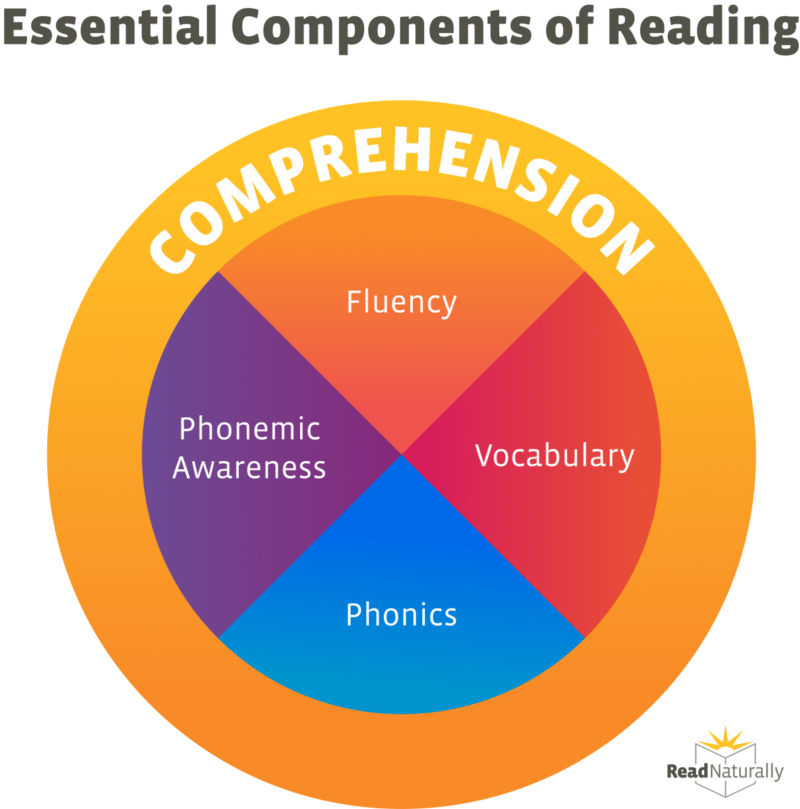Reading comprehension is the ability to not only read words but also understand and make sense of them. It involves grasping the meaning of a text, connecting it to what you already know, and making predictions or inferences about what might come next. For young readers, comprehension goes beyond just “sounding out” words; it’s about forming a mental picture of the story, understanding characters’ feelings, and making connections to real life (Snow, 2002).
Imagine reading a story about a child playing in the snow. A child with strong comprehension skills will picture the snow, relate to what it feels like to be cold, and perhaps predict that the character might build a snowman. They’re not just reading the words on the page—they’re experiencing and understanding the story.
Why is Reading Comprehension Important?
Reading comprehension is foundational to learning across all subjects. When children understand what they read, they’re more likely to enjoy reading, which makes them want to read more. This skill impacts all areas of learning, from math problems to science concepts and beyond. It is important to note the benefits of reading comprehension as it is proven it supports academic success. Good comprehension skills are essential for understanding instructions, lessons, and test questions across all subjects (Duke & Pearson, 2002).
It also Encourages a Love for Reading because when children can understand stories, they’re more likely to enjoy reading and pick up books on their own, fostering a lifelong habit and enhances their critical thinking about what they read. They are constantly making connections, and asking questions, which are key skills in both school and life. Finally, comprehending texts introduces children to new words and phrases, helping them develop a richer vocabulary and better communication skills (Neuman & Celano, 2001).
How to Develop Reading Comprehension in Young Learners
There are many ways to help young learners improve their reading comprehension. Here are some practical and fun activities you can try!
1. Ask Questions While Reading
Asking questions is a powerful way to engage children with a story and encourage them to think about what’s happening.
Who, What, Where, When, Why: While reading, pause and ask questions like “Who is the main character?” or “Why did they do that?” These questions help children pay attention to details and remember what’s going on in the story (Duke & Pearson, 2002).
Predict What Happens Next: Before turning the page, ask, “What do you think will happen next?” Predicting keeps kids engaged and helps them think about story structure.
2. Encourage Visualization
Visualization involves creating mental images based on the words being read. This helps children engage with the story on a deeper level.
Draw a Scene: After reading a part of the story, have children draw what they imagine is happening. For example, if the story describes a sunny park, ask them to draw it with as much detail as possible. This exercise strengthens memory and comprehension by translating words into images (Snow, 2002).
Picture It in Your Head: Prompt children to close their eyes and picture scenes or characters as you read aloud. Encourage them to describe what they see in their mind, which builds visualization skills that are critical for comprehension.
3. Retell the Story in Their Own Words
Retelling helps reinforce understanding by having children summarize what they’ve read.
Story Recount: Ask your child to retell the story in their own words. Encourage them to focus on key details, like the main characters, the setting, and what happened in the beginning, middle, and end. This helps them process the story and remember it better (Neuman & Celano, 2001).
Create a Story Map: Draw a story map together with spaces for the characters, setting, problem, and solution. This visual organizer helps children organize their thoughts and see the story’s structure.
4. Connect the Story to Real Life
When children relate a story to their own lives, they can better understand and remember it.
Make Personal Connections: For example, if you’re reading a story about a child who is scared of thunderstorms, ask your child, “Have you ever felt scared during a storm?” Making personal connections deepens their engagement and understanding.
Real-Life Examples: Use everyday experiences to relate to the story. If the book is about animals, talk about a time they saw a similar animal. These connections make stories more memorable and meaningful.
5. Use Graphic Organizers
Graphic organizers are visual tools that help children structure and make sense of what they’re reading.
Story Maps and Venn Diagrams: Use a story map to break down parts of the story or a Venn diagram to compare characters or events. Graphic organizers give children a clear framework to organize their thoughts and see relationships within the text (Duke & Pearson, 2002).
Sequencing Charts: For younger children, use sequencing charts to arrange events in the order they happened. This is especially useful for understanding stories with multiple events or complex plots.
6. Act Out the Story
Dramatic play helps children connect with the material and remember details.
Pretend Play: After reading a story, encourage children to act it out. Let them take on roles as different characters, using props if they like. Acting out stories helps them remember details and builds their understanding of character emotions and motives (Snow, 2002).
Puppets or Stuffed Animals: Use puppets or toys to retell the story together. This approach works well with younger children who enjoy hands-on activities.
References
- Duke, N. K., & Pearson, P. D. (2002). Effective practices for developing reading comprehension. Journal of Education, 189(1), 107-122.
- Neuman, S. B., & Celano, D. (2001). Access to print in low-income and middle-income communities: An ecological study of four neighborhoods. Reading Research Quarterly, 36(1), 8-26.
- Snow, C. E. (2002). Reading for understanding: Toward an R&D program in reading comprehension. RAND Corporation.


No comments:
Post a Comment